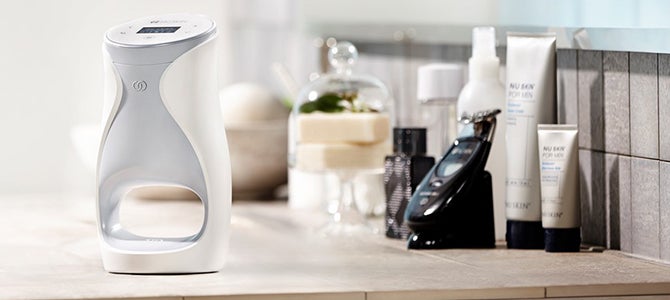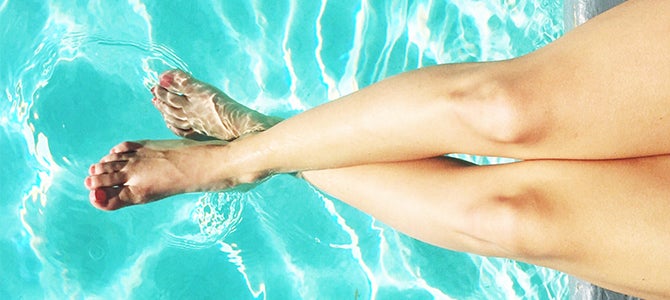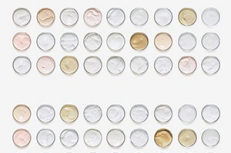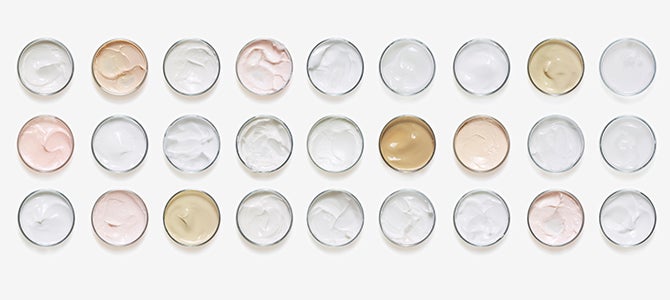ageLOC Me—A Well Tested Customized Skin Care System
July 14, 2016

When Nu Skin prepares to launch a new product, our Research and Development team evaluates what testing is needed to ensure safety and to substantiate claims. These evaluations are often modified based on new information that may arise during product development. As we began developing ageLOC Me, we realized there were many aspects of the unique skin care system that we wanted to ensure we fully understood. We determined that our ageLOC Me testing would need to be robust.
Since the serums and moisturizers found in ageLOC Me are leave-on products, Nu Skin Personal Care conducted its standard testing methods to evaluate skin irritation, discomfort, packaging stability, the potential for blackheads and blemishes, UV protection (for day moisturizers claiming SPF), usage with other products, anti-aging benefits, and ease of use.
Standard Testing Methods for Nu Skin Personal Care Products
Irritection Testing to Identify Potential Irritation
Irritection testing is an in vitro (study conducted on cells outside normal biological context) evaluation that screens potential formulas. This evaluation is performed in a lab and is based on the understanding that certain ingredients are known to be potentially irritating to skin. This method mimics the biochemical phenomenon that would alert of potential irritation. We conducted a test on each of the final products in ageLOC Me as well as a number of iterations.
Sting Panel Testing to Evaluate Skin Discomfort
We also evaluated potential formulas on human volunteers to identify the probability of skin reactions. Participants in this study included a panel of individuals who rated the products for skin discomfort. A screener visually evaluated the panel for red and/or rashy skin. Each individual was randomly assigned to have the test product applied to one cheek and a positive control (like lactic acid) to the other. Both sides were graded and evaluated.
Package Stability Testing for Proper Product Delivery
While we screened product iterations for topline safety like irritection and sting panel, we also evaluated the formula for package stability. For ageLOC Me, this included valve testing to ensure that the products would dispense properly and be compatible with our special packaging. During this time, we also submitted the formulas to microbial challenge testing, an evaluation of the formula’s ability to prevent the growth of—or kill—microorganisms. This method also helped to ensure that the preservative systems within the product formula were robust.
Another goal of this testing method was to assess the impact of environmental exposures by using freeze/thaw cycles to identify any overall stability issues. After we conducted these tests, we began focusing our efforts on finalizing formulas. We then tested these final formulas further.
HRIPT and Patch Testing to Evaluate the Potential for Blackheads and Blemishes
Next, we submitted the formulas for HRIPT, a standardized test of 100 individuals. Product was applied in patches to subjects' backs and then covered. These patches were reapplied and graded periodically throughout the six-week duration of the study. The study included a rest period, followed by a challenge week. A dermatologist then graded these patch sites.
The products were also evaluated for the potential to cause comedones—blackheads and/or whiteheads. This evaluation is also a patch test that runs for four weeks. The product combinations and controls were applied and covered periodically throughout the testing period. The testing sites were evaluated at the conclusion of the study for skin irritation and comedones.
UV Testing for SPF Claims
We conducted UV testing on all ageLOC Me Day Moisturizers making Broad Spectrum Sun Protection Factor claims. While SPF is an evaluation of UVB protection, in order to make “Broad Spectrum” claims, we must verify that the product will similarly protect from UVA rays. UVA rays penetrate the deeper layers of the skin and can lead to premature skin aging and wrinkling and can potentially contribute to the development of skin cancer. UVB rays penetrate the superficial layers of the skin and can cause redness and sunburns.1
We conducted the US FDA in vitro broad spectrum test to substantiate the Broad Spectrum SPF 20 or 25 claim made on each of these products. We also tested these products to other international standards for regions that require it.
Layering Study for Use with Other Skin Care Products
Due to the nature of this product system, we also conducted a layering study. This internally conducted study looked at how well components (serums and moisturizes) of the product system worked both with each other as well as under makeup. We also evaluated the use of ageLOC Tru Face Essence Ultra with ageLOC Me, as we expected this to be a common product combination. We found that ageLOC Me worked well under makeup with and without ageLOC Tru Face Essence Ultra.
Home Use Testing for Improved Convenience
ageLOC Me was also subjected to Home Use Testing to understand the daily interactions, ease of use, and benefits of the system. We conducted these tests around the globe to gather feedback on ways we could improve the device throughout its development. This provided invaluable information to ensure the device would deliver the convenience and acceptability that consumers desired.
Clinical Studies to Substantiate Anti-Aging Benefits
Nu Skin has conducted clinical studies on ageLOC Me serums to substantiate their anti-aging benefits. We contracted a research organization to evaluate ageLOC Me serums for 16 weeks. Subjects were recruited and used the calibration set of serums for four weeks, after which they transitioned to one of two predominant serum combinations. Throughout the study, both clinical graders and subjects themselves noted improvement in skin aging characteristics, like appearance of lines and wrinkles, firmness, skin smoothness, brightness, reduction of discoloration, etc.
Complementing ageLOC Me Regimens with the Galvanic Spa
We also looked at complementing the ageLOC Me regimens with the ageLOC Galvanic Spa System. In this study, we commissioned a third party research center to conduct this clinical evaluation. Subjects used ageLOC Me every day as instructed. They were then randomly assigned to use the ageLOC Galvanic Spa System, combining the ageLOC Galvanic Spa Facial Gels three times per week on one half of their face. Throughout the duration of the study, graders compared aging skin attributes from one side of the face to the other. We found that the ageLOC Galvanic Spa System could boost the benefits of ageLOC Me and that this product combination could increase how quickly individuals would see results.
ageLOC Me System testing is on-going, but this overview illustrates a portion of the time and effort put into getting the formulas—and ultimately the system—ready for consumers. Though time and labor intensive, Nu Skin has always felt that adequately evaluating our products is critical to ensure we are providing the best products possible for our sales leaders and consumers.
To learn more about ageLOC Me, visit Discover ageLOC Me - Nu Skin.
Written by:
Brian Cook
Senior Associate Scientist
R&D
Sources:
1. http://www.skincancer.org/



